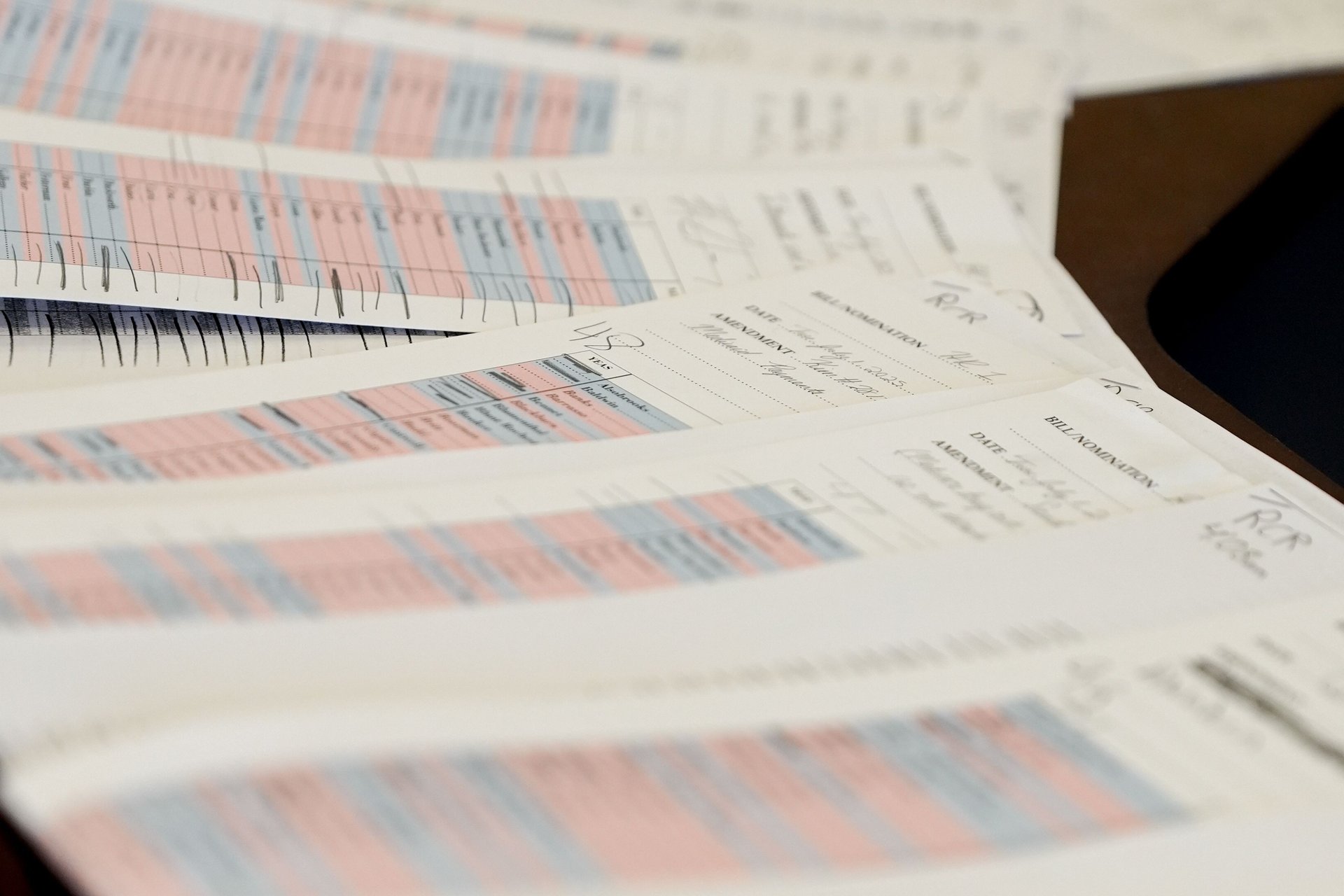Americans can expect higher electric costs if Trump's big bill passes Congress, experts say
The Senate passed the GOP domestic policy bill that includes giant cuts to clean energy — and experts say it will make energy costs rise

Kent Nishimura/Bloomberg via Getty Images
Congress is deliberating over a GOP domestic policy bill that includes sweeping cuts and changes to energy policy that, if passed, will raise Americans' energy and electricity costs, according to experts.
Suggested Reading
So far, the bill passed through the Senate in a tight 51-50 vote with Vice President J.D. Vance as the tie breaker on Tuesday. However, the approved bill included many last-minute changes.
Related Content
The new Senate bill takes an axe to popular tax credits for clean-energy initiatives in the electric-vehicle, home-efficiency, and manufacturing sectors. Under the legislative changes, wind and solar tax credits are pegged to be repealed immediately. The bill also curbs tax credits for residential homes and commercial buildings that made them more energy efficient.
The House took up the bill on Wednesday with an imposed deadline of July 4th from President Donald Trump.
Shane Londagin, a senior climate and energy policy advisor for innovation for Third Way, a national think tank, said that household energy and electricity costs would “absolutely increase” across all 50 states by 2030 if the bill is passed.
“There was no version of this bill that led to a decrease in energy costs,” Londagin said.
How much will Americans' energy and electricity bills go up?
An analysis from Energy Innovation, a climate policy think tank, estimates that based on the most recent version of the bill from the Senate, wholesale electricity prices would increase by 25% by 2030 and 74% by 2035.
“Utilities then have to pass those costs onto consumers, which pushes up the retail rates, and those are the rates that residential, commercial, and industrial users all pay,” Londagin said.
The analysis estimates that rates would increase by 10-18% by 2035 for consumers. This means households would pay $130 more per year by 2030 and $170 more per year by 2035. Some states could see prices increase by over $400 per year by 2035.
Ari Matusiak, cofounder and CEO of Rewiring America, a nonprofit that advocates for electrification, said that the impact of these price hikes will be felt year-round, but people in deregulated markets might see a cost increase during peak seasons like summer and winter when electricity demand is high.
“Prices in these markets change with the cost to produce electricity. Losing clean energy support from the IRA could make bills rise more often and by larger amounts throughout the year,” he said.
Why will cuts to clean energy increase utility bills?
“[The bill] raises the cost of generating the cheapest, fastest-to-build, electricity generation on one hand while eliminating effective home energy tax credits for households and builders on the other,” Matusiak said.
Londagin said that removing a “massive portion” of the supply — which he defined as solar, wind, and batteries — induces higher natural gas prices and prices for non-renewables, saying it “pushes everything up.”
He added that even if the bill passes, the U.S. will still build a lot of this infrastructure “simply because we have to,” although the bill will make it "significantly more expensive” to meet that growing demand.
“Beyond households, the bill threatens economic competitiveness, weakens energy resilience, and sets back national efforts to lower emissions and meet growing electricity demand,” Matusiak said.
What states would be the most impacted?
Londagin said “a bill that strips the tax credits for wind and solar” will most directly affect red states in the middle of the country and the South because they build renewables quicker than the coasts.
“They deploy onshore wind faster than any other part of the country,” he said. “The state that deploys solar and battery storage the fastest is Texas.”
Skanda Amarnath, executive director of Employ America, a macroeconomic policy advocacy group, said that gas-dependent states, even those with “lots of land and favorable renewable resources,” are likely exposed to higher costs. He added that states with a high amount of non-oil and non-gas sources are likely to be “most insulated from an oil and gas shock,” adding examples like South Dakota and and Iowa.
—Brian O'Connell contributed to this article.
